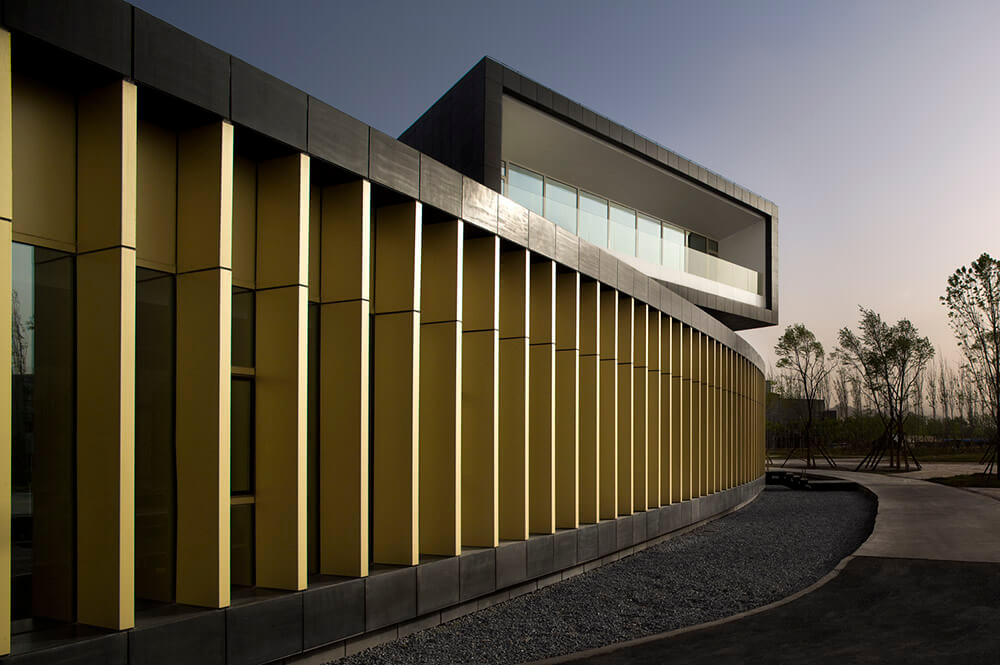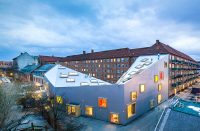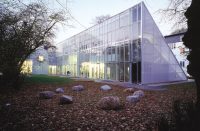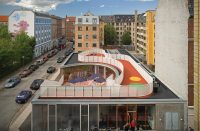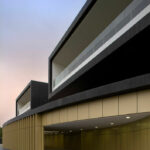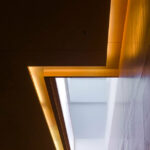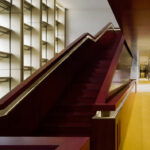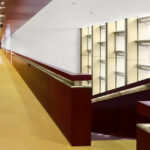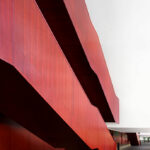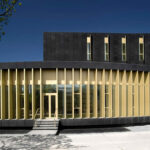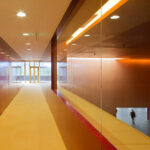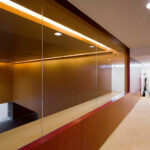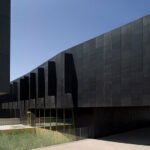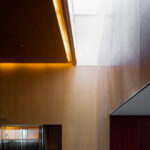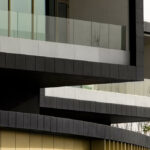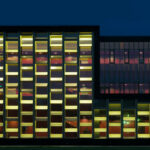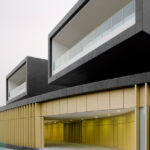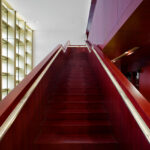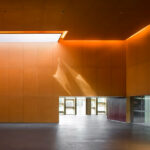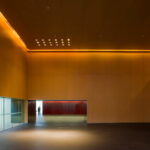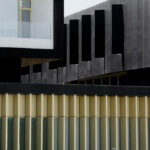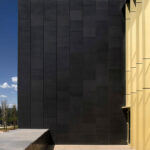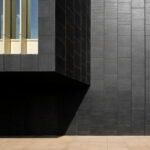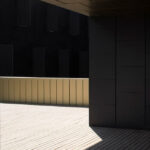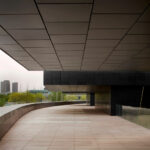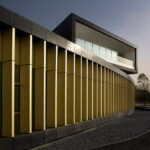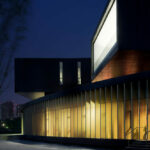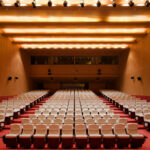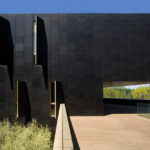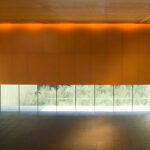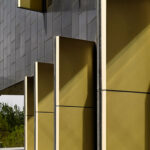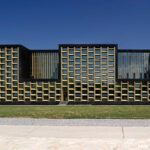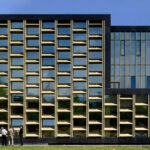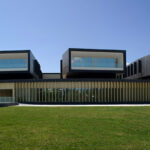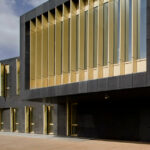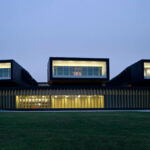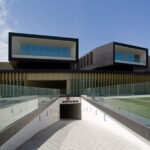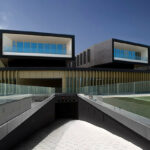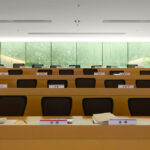Architect(s): IDOM
Address: Software Park, BEIJING, China
Latitude/Longitude: 40.048758,116.283561
Photographs: Aitor Ortiz
CEIBS (China Europe International Business School) is the Business School leader in Asia. As part of its growth has taken the decision of building a new Campus in Beijing contracting AXCT-IDOM Group as design architect.
The new Campus occupies about 19.000m² in a three floors building and a basement floor in a plot 33.000m2 in the Zhong Guan Cun Science Park in Beijing. The project is conditioned by the teaching function, the Zhong Guan Cun Science Park master planning which proposes a series of compact buildings scattered in the forest as small islands in the ocean and finally by the client´s needs of building it in two phases and making it look as good and as finished also at the end of phase 1.
The building in phase 1 is composed by a basement which occupies completely the plot permitted with the more public and main uses as the lecture hall, the amphitheatres classrooms, discussion rooms and bar. It is full of courtyards that like the Chinese traditional architecture give as a very good climate control and let us prioritize the relationship among different spaces not losing the complete vision of the building as it happens in the forbidden city in Beijing. In the other two floors we have some more discussion rooms and flat classrooms and other more not so public uses as professors and staff working spaces and organized as fingers linked to a long corridor. Each floor has a different shape and a different relationship with the forest. Basement relationship is with the trunk of the tree and with the courtyards full of green bamboo creating a introvert space, second floor with the crown with a similar ambient and is the third floor the one occupied by the staff and professors is the one that looks over the forest like a metaphor of a ship lookout.
The traditional Chinese architecture and philosophy already fascinated us, and it has been the engine of our architectural ideas helping us to shape the project, and it is easy to recognize it in the election of the colours and materials as, mainly, in the spatial configuration of the building. This is the way the building represents CEIBS spirit of encounter between China and Europe.
In phase 2 the building will be able to express the dynamic concept of balance of the Chinese yin yang in the Chinese architecture thanks to the feng shui art and, in this case, interpreted from our European respectful point of view.
Text description provided by the architects.
Client: CEIBS
Project manager: Steve Song (CEIBS)
Project architect: Iñaki Garai (IDOM-ACXT)
Collaborating architects: Jose Cavallero (IDOM-ACXT), Inés López (IDOM-CXT)
Design project manager: Ander Gorostiaga (IDOM-ACXT)
Local architect: Li Dongmei (IPPR), Chen Xuesong (IPPR)
Interior design: Jose Cavallero (IDOM-ACXT)
Structural design: Chen Zhiping (IPPR), Zhang Jingru (IPPR)
Electrical engineering design: Wu Weimin (IPPR), Han Bin(IPPR)
Mechanical engineering design: Fu Xiaoman (IPPR)
Sanitary engineering design: Xu Hong (IPPR)
Local façade design: Fan Rong (SHENYANGLIMING), Zhang Bo (SHENYANGLIMING)
Lighting design: Tiger Li (LEOX design)
Signage and wayfinding design: Dick Wong
Landscape design: Jose Cavallero (IDOM – ACXT)
Local landscape design: Tian Yuan (Beijing Beilin Landscape Architecture Institute), Wang Jian (Beijing Beilin Landscape Architecture Institute)
Building construction project management: STRONG
Area: 18.000m²
Contributed by IDOM

